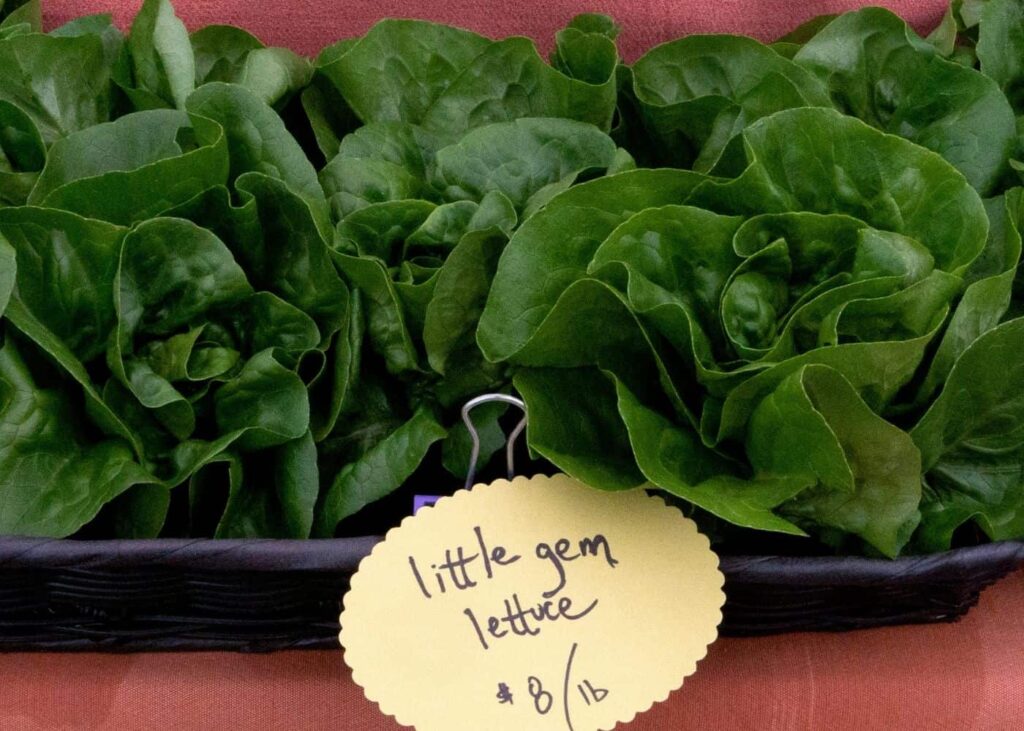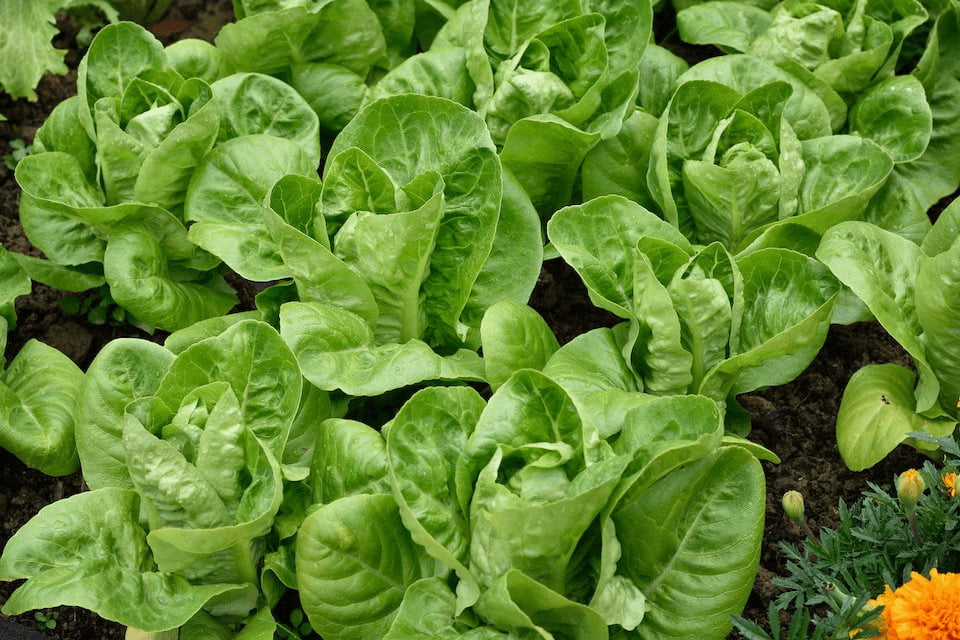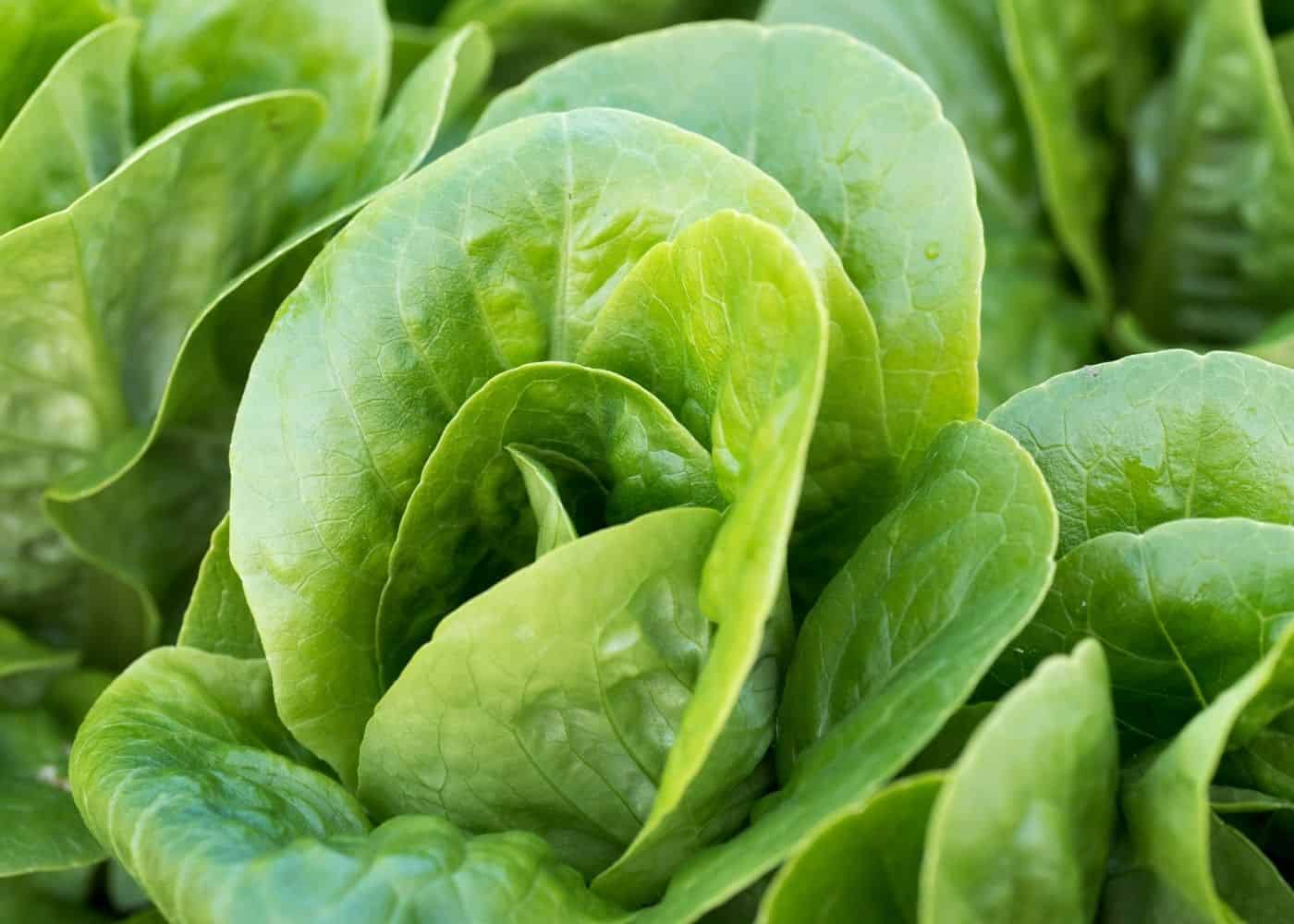So you’ve decided to try your hand at growing little gem lettuce? Well, you’re in for a treat! This ultimate guide will take you through all the steps you need to successfully grow this delicious and crispy variety in your own backyard. From choosing the right seeds to providing the ideal growing conditions, we’ve got you covered. Whether you’re a seasoned gardener or a beginner, this guide will equip you with the knowledge and tips to cultivate little gem lettuce like a pro. Get ready to enjoy crunchy salads straight from your garden!

Choosing Little Gem Lettuce Varieties
Understanding Little Gem Lettuce
Little Gem lettuce is a popular and versatile variety of lettuce that is known for its small, compact heads and crisp, sweet leaves. It is a cross between romaine and butterhead lettuce, offering the best of both worlds. Little Gem lettuce is perfect for gardeners who want a smaller, more manageable lettuce variety that is still packed with flavor. With its rich green color and excellent texture, Little Gem lettuce is a favorite among home gardeners and chefs alike.
Different Varieties of Little Gem Lettuce
There are several different varieties of Little Gem lettuce to choose from, each with its own unique characteristics. Some popular varieties include ‘Little Gem’, ‘Dazzle’, and ‘Mini Green’. ‘Little Gem’ is the classic variety and is known for its sweet and slightly nutty flavor. ‘Dazzle’ is a newer variety that has a bright green color and a crisp texture. ‘Mini Green’ is a miniature version of Little Gem lettuce, perfect for small gardens or containers.
Selecting the Best Little Gem Lettuce Seeds or Seedlings
When selecting Little Gem lettuce seeds or seedlings, there are a few factors to consider. Look for seeds or seedlings that are fresh, healthy, and disease-free. If purchasing seedlings, choose ones that have a strong root system and well-developed leaves. It’s also important to choose a variety that suits your taste preferences and growing conditions. Consider factors such as flavor, size, and resistance to diseases. By carefully selecting the best seeds or seedlings, you’ll set yourself up for a successful Little Gem lettuce harvest.
Preparing the Soil for Little Gem Lettuce
Testing Soil pH and Composition
Before planting Little Gem lettuce, it’s crucial to test the soil pH and composition. Little Gem lettuce prefers a slightly acidic soil with a pH range of 6.0 to 6.8. You can easily test the pH of your soil using a soil testing kit, which can be purchased at most gardening centers or online. Additionally, it’s important to assess the composition of your soil. Little Gem lettuce thrives in well-draining soil that is rich in organic matter.
Amending the Soil
Based on the results of your soil test, you may need to amend the soil to create optimal growing conditions for Little Gem lettuce. If the pH is too high, you can lower it by adding organic matter such as compost or peat moss. On the other hand, if the pH is too low, you can raise it by adding agricultural lime. Additionally, it’s beneficial to incorporate organic matter into the soil, such as compost or well-rotted manure, to improve its fertility and texture.
Creating Raised Beds or Containers
One popular method of growing Little Gem lettuce is to create raised beds or use containers. Raised beds provide better drainage and allow you to control the soil composition more easily. They also help in preventing soil compaction, which can inhibit the growth of Little Gem lettuce. If using containers, make sure they have good drainage holes and are large enough to accommodate the growth of the lettuce plants. Whichever method you choose, ensure that the soil is loose, well-aerated, and nutrient-rich.

Planting Little Gem Lettuce
Determining the Ideal Planting Time
Little Gem lettuce is a cool-season crop and thrives when grown in temperatures ranging from 45 to 75°F (7 to 24°C). It is best to plant Little Gem lettuce in early spring or late summer when the temperatures are mild. However, with proper care and protection, it can also be grown during the warmer months. Keep in mind that Little Gem lettuce does not tolerate extreme heat or frost, so make sure to plan your planting accordingly.
Preparing Seeds for Direct Sowing
If you’re starting Little Gem lettuce from seeds, you can directly sow them into the prepared soil. Before sowing, soak the seeds in water for about 24 hours. This will help to improve germination rates. After soaking, sow the seeds about half an inch deep, spaced at least six inches apart. Cover the seeds with a thin layer of soil and water gently to ensure good seed-to-soil contact.
Transplanting Seedlings
Alternatively, if you’re using seedlings, you can transplant them into the garden once they have reached a height of around two inches. Dig a hole that is slightly larger than the root ball of the seedling, making sure not to damage the delicate roots. Gently place the seedling into the hole, backfill with soil, and firm it down gently around the base of the plant. Water thoroughly after transplanting to help the seedlings establish.
Spacing and Depth for Planting
When planting Little Gem lettuce, it’s important to give each plant enough space to grow and develop. Space the plants at least six inches apart for optimal air circulation and to prevent overcrowding. Plant the lettuce at the same depth it was previously growing, whether you’re planting seeds or transplanting seedlings. Ensure that the soil is firmed gently around the base of the plant to provide stability and encourage healthy root growth.
Providing Optimal Growing Conditions
Sunlight and Temperature Requirements
Little Gem lettuce requires at least six hours of direct sunlight each day to grow and thrive. However, it can tolerate some shade, especially in warmer climates. In areas with scorching summers, providing afternoon shade can help prevent the lettuce from bolting or becoming bitter. It’s also essential to monitor the temperature and protect the lettuce from extreme heat or frost to ensure optimal growth.
Watering Little Gem Lettuce
Consistent and adequate watering is crucial for the growth and development of Little Gem lettuce. The soil should be kept evenly moist, but not waterlogged. Avoid overhead watering, as it can lead to the development of fungal diseases. Instead, water the plants at the base, allowing the water to penetrate deeply into the soil. Mulching around the plants can help retain moisture and reduce the frequency of watering.
Fertilizing the Plants
Little Gem lettuce is a moderately heavy feeder, meaning it requires regular fertilization to support its growth. Before planting, incorporate a balanced organic fertilizer into the soil. Additionally, you can apply a diluted liquid fertilizer every two to three weeks during the growing season to provide the lettuce with essential nutrients. Always follow the instructions on the fertilizer package and avoid over-fertilizing, as this can lead to burnt foliage or stunted growth.
Mulching to Retain Moisture
Applying a layer of organic mulch around the Little Gem lettuce plants can be beneficial in retaining moisture, suppressing weed growth, and maintaining a more consistent soil temperature. Organic materials such as straw, shredded leaves, or compost can be used as mulch. Apply a layer of mulch about two inches thick, making sure to keep it away from the base of the plants to prevent rotting.
Protecting from Pests and Diseases
Little Gem lettuce is susceptible to various pests and diseases, including aphids, slugs, snails, and fungal infections. Regularly inspect the plants for any signs of damage or infestation, and take prompt action to prevent further damage. Consider using organic pest control methods, such as introducing beneficial insects or using insecticidal soaps. Maintaining good garden hygiene, such as removing fallen leaves or debris, can also help prevent the spread of diseases.

Caring for Little Gem Lettuce Plants
Pruning and Thinning
To encourage the growth of healthy and productive Little Gem lettuce plants, it’s important to prune and thin them as needed. Remove any damaged or yellowing leaves regularly to promote air circulation and prevent the spread of diseases. Additionally, thinning the lettuce plants can help prevent overcrowding and allow the remaining plants to access more nutrients and sunlight.
Weed Control
Keeping the garden free from weeds is essential for the proper growth and development of Little Gem lettuce. Weeds compete with the lettuce plants for nutrients, water, and sunlight, and can inhibit their growth. Regularly inspect the garden for weeds and promptly remove them by hand, taking care not to disturb the lettuce plants. Applying a layer of mulch can also help suppress weed growth and make weed control more manageable.
Supporting the Plants
Although Little Gem lettuce doesn’t require extensive support like climbing vegetables, supporting the plants can help prevent them from bending or breaking under the weight of heavy rain or wind. If you notice the plants leaning to one side, gently push the soil against the base of the plant to stabilize it. In regions with strong winds, you can provide support by placing stakes around the plants and securing them with garden twine.
Companion Planting with Little Gem Lettuce
Companion planting is the practice of growing different plants together to maximize their growth and deter pests. Little Gem lettuce can benefit from companion planting with herbs such as dill, chamomile, and basil, which can help repel pests and attract beneficial insects. However, avoid planting Little Gem lettuce with other plants from the lettuce family, as this can increase the risk of disease transmission.
Harvesting Little Gem Lettuce
Determining the Best Harvest Time
Little Gem lettuce is typically ready for harvest when the heads reach a size of four to six inches in diameter. However, you can also harvest the leaves individually at any time once they have reached a desirable size. To determine if the heads are ready, gently squeeze them. If they feel firm and compact, it’s a good indication that they are ready to be harvested.
Harvesting Leaves vs. Whole Heads
The choice of harvesting either individual leaves or whole heads of Little Gem lettuce depends on personal preference and the intended use. Harvesting individual leaves allows for a continuous supply of fresh lettuce throughout the growing season. Simply snip off the outer leaves as needed, leaving the inner leaves to continue growing. On the other hand, harvesting whole heads is ideal if you plan to enjoy Little Gem lettuce in salads or as a side dish.
Cutting and Storing Little Gem Lettuce
To harvest Little Gem lettuce heads, use a sharp knife or shears to cut the heads off at the base. Be careful not to damage any surrounding leaves or the growing point at the center of the plant. Immediately after harvesting, rinse the heads under cool water to remove any dirt or debris. Shake off excess water and store the lettuce heads in a plastic bag or airtight container in the refrigerator. Properly stored, Little Gem lettuce can stay fresh for up to one week.

Common Issues and Troubleshooting
Pest Infestations
Common pests that can affect Little Gem lettuce include aphids, slugs, snails, and caterpillars. If you notice any signs of pest infestation, such as holes in the leaves or discolored spots, take immediate action to control the infestation. You can use organic pest control methods, such as introducing beneficial insects or using natural insecticides like neem oil. Regularly inspect the plants for signs of pest activity and remove any affected leaves or plants to prevent the infestation from spreading.
Disease Management
Little Gem lettuce is susceptible to diseases such as powdery mildew, downy mildew, and rot. To prevent these diseases, practice good garden hygiene by removing fallen leaves or debris regularly. Avoid overhead watering, as it can create a damp environment that promotes fungal growth. If diseases do occur, consider using organic fungicides or disease-resistant varieties of Little Gem lettuce. At the first sign of disease, remove and destroy any affected plants or leaves to prevent further spread.
Nutritional Deficiencies
Inadequate nutrient levels can result in stunted growth, yellowing leaves, and poor overall health of Little Gem lettuce plants. To prevent nutritional deficiencies, ensure that the soil is rich in organic matter and provide regular fertilization as discussed earlier. If you notice any signs of nutrient deficiency, such as pale leaves or slow growth, consider supplementing with a balanced organic fertilizer or soil amendment to correct the imbalance.
Using Little Gem Lettuce in Recipes
Classic Little Gem Salad Recipes
Little Gem lettuce is perfect for creating refreshing and vibrant salads. Its crisp texture and mild, sweet flavor make it an excellent base for a variety of salad recipes. From traditional Caesar salads to colorful summer salads with fresh fruits and vegetables, the possibilities are endless. Toss Little Gem lettuce with your favorite dressings, toppings, and complementary ingredients to create a salad that suits your taste buds.
Creative Uses for Little Gem Lettuce
Beyond salads, Little Gem lettuce can be incorporated into a wide range of creative recipes. Its small size and crunchy texture make it an ideal vessel for appetizers and wraps. Use it as a bed for grilled meats or seafood, or roll it up with flavorful fillings for a refreshing snack. Little Gem lettuce leaves can also be used as a substitute for traditional tortilla wraps, adding a healthy twist to your favorite wraps and tacos.

Preserving Little Gem Lettuce
Freezing Little Gem Lettuce
While Little Gem lettuce is best enjoyed fresh, you can also preserve it by freezing. However, freezing can change the texture of the lettuce, so it’s best suited for cooked dishes rather than salads. To freeze Little Gem lettuce, blanch the leaves in boiling water for one to two minutes, then plunge them into ice water to stop the cooking process. Pat them dry, place them in airtight freezer bags or containers, and store them in the freezer for up to three months.
Pickling Little Gem Lettuce
Pickling Little Gem lettuce can be a unique and flavorful way to preserve its freshness. The pickled lettuce can be enjoyed as a condiment or used to add a tangy crunch to sandwiches and salads. To pickle Little Gem lettuce, immerse the leaves in a mixture of vinegar, water, sugar, and salt. Place the mixture in sterilized jars and let it sit in the refrigerator for at least 24 hours before enjoying.
Drying Little Gem Lettuce
Drying Little Gem lettuce allows you to preserve its flavor and use it as a dried herb in cooking. After thoroughly washing and drying the leaves, spread them out on a baking sheet and place them in an oven set to the lowest temperature. Keep the oven door slightly ajar to allow moisture to escape. Let the leaves dehydrate for several hours until they become crisp. Once dried, store the leaves in an airtight container in a cool, dark place.
Tips and Tricks for Growing Little Gem Lettuce
Succession Planting
To ensure a continuous harvest of Little Gem lettuce throughout the growing season, consider practicing succession planting. Rather than planting all the seeds or seedlings at once, stagger the plantings by a few weeks. This way, you’ll have a constant supply of fresh lettuce as the older plants are harvested and the new ones reach maturity.
Extending the Growing Season
In regions with shorter growing seasons, you can extend the growing season of Little Gem lettuce by providing protection from frost. Use row covers or cloches to create a mini greenhouse effect and keep the plants warm. This extra protection can allow you to enjoy fresh Little Gem lettuce well into the cooler months.
Using Shade Cloth in Hot Climates
If you live in a region with hot summers, you can protect your Little Gem lettuce from the scorching sun by using shade cloth. Shade cloth can be easily attached to a structure or stakes to provide filtered light and reduce the intensity of the sunlight. This can help prevent the lettuce from bolting or becoming bitter in high temperatures.
Overwintering Little Gem Lettuce
In milder climates, you can overwinter Little Gem lettuce and enjoy a continuous harvest even during the winter months. To overwinter, plant Little Gem lettuce in late summer or early fall, making sure to provide adequate protection from frost. Monitor the plants closely and provide additional coverings, such as row covers or cold frames, during periods of extreme cold. With proper care, you can enjoy fresh Little Gem lettuce even when other gardening chores are at a standstill.
By following these tips and techniques, you can successfully grow and enjoy Little Gem lettuce in your garden. From selecting the best varieties to preserving the harvest, Little Gem lettuce offers a world of possibilities for home gardeners and food enthusiasts. Whether you’re savoring it in a salad or using it in creative recipes, Little Gem lettuce is sure to add freshness and flavor to your meals. So roll up your sleeves, get your hands dirty, and start growing your own little gems!



